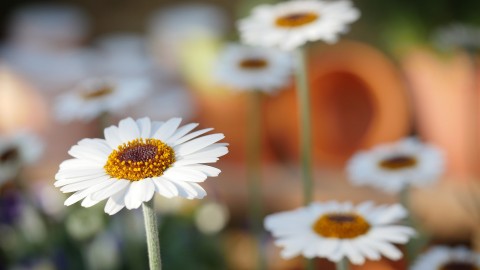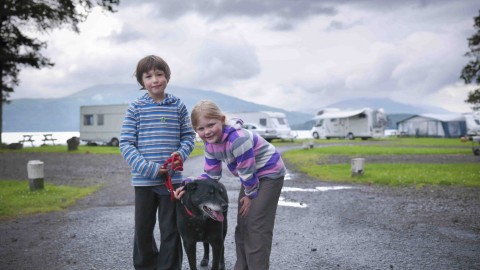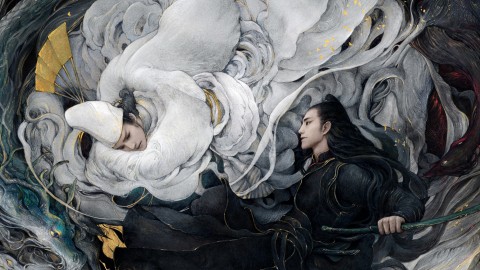There is a beautiful story in Buddhist literature. Once Buddha said to his disciple. Sariputra. “Concentrate on laughter.” He asked. “For what am I to look into it?”
Buddha said, “You are not to look for anything; specially. You simply concentrate on laughter, and whatsoever laughter reveals, you report.”
Sariputra reported. Never before and never after has anybody looked so deeply in laughter. Sariputra defined and categorized laughter in six categories, “They are arranged in hierarchical fashion from the most sublime to the most sensuous and unrefined.” The laughter revealed its inner being to Sariputra.
First he called SITA: “a faint, almost imperceptible smile manifests in the subtleties of the facial expression and countenance alone.” If you are very, very alert, only then can you see the laughter he called SITA. If you watch Buddha’s face you will find it there. It is very subtle, very refined. If you are very, very concentrated, only then will you see it, otherwise you will miss it, because it is just in the expression. Not even the lips are moving. In fact, there is no visible thing, it is invisible laughter. That may be the reason Christians think Jesus never laughed: it may have been SITA. It is said that Sariputra found SITA on Buddha’s face. It was rare. It was very rare because it is one of the most refined things.
When your soul reaches to the highest point, only then SITA. Then it is not something that you do it is simply there for anybody who is sensitive enough, concentrated enough, to see it.
Second, Sariputra said, HASITA: “a smile involving a slight movement of the lips and barely revealing the tips of the teeth.” Third he called VIHASITA: “a broad smile accompanied by a modicum of laughter.” Fourth he called UPAHASITA: “accentuated laughter, louder in volume, associated with movements of the head, shoulders and arms.” Fifth he called APAHASITA: “loud laughter that brings tears.” And sixth he called ATIHASITA: “the most boisterous, uproarious laughter, attended by movements of the whole body, doubling over in raucous guffawing, convulsions, hysterics.”
When you concentrate even on a small thing like laughter, it becomes a tremendous, a very big thing – the whole world.
Concentration reveals to you things which are not ordinarily revealed.
Ordinarily, you live in a very indifferent mood. You simply go on living as if half asleep – looking, and not looking at all; seeing and not seeing at all; hearing, and not hearing at all. Concentration brings energy to your eyes. If you look at a thing with a concentrated mind, everything excluded, suddenly that small thing reveals much that was always there waiting.
The whole of science is concentration. Watch a scientist working; he is in concentration.
There is an anecdote about Pasteur. He was working. Looking through his microscope, so silent, so unmoving that a visitor had come and waited for long, and he was afraid to disturb him. Something sacred surrounded the scientist.
When Pasteur came out of his concentration, he asked the visitor. “How long have you been waiting? Why didn’t you tell me before?”
He said, “I was going to tell you many times – in fact. I am in a hurry. I have to reach somewhere, and some message has to be delivered to you, but you were in such deep concentration – almost as if praying – that I could not disturb. It was sacred.”
Pasteur said, “You are right. It is my prayer. Whenever I feel disturbed and whenever I feel too many worries and whenever I feel too many thoughts. I simply take my microscope. I look through it – immediately, the old world drops. I am concentrated.”
A scientist’s whole work is of concentration, remember this. Science can become the first step towards yoga because concentration is the first inner step of yoga.
Each scientist, if he goes on growing and does not get stuck, will become a yogi.
He is on the way because he is fulfilling the first condition concentration.
“Dharana, concentration, is confining the mind to the object being meditated upon.”
DHYAN, CONTEMPLATION, IS THE UNINTERRUPTED FLOW OF THE MIND TO THE OBJECT.
First, concentration, dropping the crowd of objects and choosing one object. Once you have chosen one object and you can retain one object in your consciousness, concentration is achieved. Now the second step uninterrupted Row of consciousness towards the object. As if light is falling from a torch, uninterrupted. Or, have you seen? You pour water from one pot to another pot the flow will be interrupted; it will not be uninterrupted. You pour oil from one pot to another pot: the flow will be uninterrupted, continuous; the thread will not be broken.
Dhyan, contemplation, means your consciousness falling on the object in continuity, with no break – because each break means you are distracted, you have gone somewhere else. If you can attain the first, the second is not difficult. If you cannot attain the first, the second is impossible. Once you drop objects, you choose one object, then you drop all loopholes in your consciousness, all distractions in your consciousness, you simply pour yourself on one object.
When you look at one object the object reveals its qualities. A small object can reveal all the qualities of God.
There is a poem by Tennyson. He was going for a morning walk and he came across an old wall, and in the wall there was grass growing, and a small flower had bloomed. He looked at that flower. The morning, he must have been feeling relaxed, happy, energy must have been flowing, the sun was rising…. Suddenly the thought occurred to his mind – looking at this small flower he said, “If I can understand you root and all. I will understand the whole universe.” Because each small particle is a miniature universe.
Each small particle carries the whole universe as each drop carries the whole ocean. If you can understand one drop of ocean you have understood all oceans; now there is no need to go to understand each drop. One drop will do.
Concentration reveals the qualities of the drop, and the drop becomes the ocean.
Meditation reveals the qualities of consciousness, and the individual consciousness becomes cosmic consciousness. First reveals the object: second reveals the subject. An uninterrupted flow of consciousness towards any object….
In that uninterrupted flow, in that unfrozen flow, just in that flow… you are simply flowing like a river, with no interruption, with no distraction… suddenly you become for the first time aware about the subjectivity that you have been carrying all along who you are.
In an uninterrupted flow of consciousness ego disappears. You become the self, egoless self, selfless self. You have also become an ocean.
The second, contemplation, is the way of the artist. The first, concentration, is the way of the scientist. The scientist is concerned with the outside world, not with himself. The artist is concerned with himself, not with the outside world. Then a scientist brings something, he brings it from the objective world. When an artist brings something he brings it out of himself. A poem: he digs deep in himself. A painting he digs deep in himself. Don’t ask the artist about being objective. He is a subjectivist.
Have you seen Van Gogh’s trees? They almost reach to the heavens; they touch the stars. They overreach. Trees like that exist nowhere – except in Van Gogh’s paintings. Stars are small and trees are big. Somebody asked Van Gogh, “From where do you create these trees? We have never seen such trees.” He said, “Out of me. Because, to me, trees always seem, desires of the earth to meet the sky.”
“Desires of the earth to meet the sky” – then the tree is totally transformed, a metamorphosis has happened. Then the tree is not an object; it has become a subjectivity. As if the artist realizes the tree by becoming a tree himself.
There are many beautiful stories about Zen Masters, because Zen Masters were great painters and great artists. That is one of the most beautiful things about Zen. No other religion has been so creative, and unless a religion is creative, it is not a total religion – something is missing.
One Zen Master used to tell his disciples, “If you want to paint bamboo, become bamboo.” There is no other way. How can you paint bamboo, if you have not felt it from within?… If you have not felt yourself as a bamboo standing against the sky, standing against the wind, standing against the rains, standing high with pride in the sun? If you have not heard the noise of the wind passing through the bamboo as the bamboo hears it, if you have not felt the rain falling on the bamboo as the bamboo feels it, how can you paint a bamboo? If you have not heard the sound of the cuckoo as the bamboo hears it, how can you paint a bamboo? Then you paint bamboo as a photographer. You may be a camera, but you are not an artist.
Camera belongs to the world of science. The camera is scientific. It simply shows the objectivity of the bamboo. But when a Master looks at the bamboo he is not looking from the outside. He drops himself by and by. His uninterrupted Row of consciousness falls on the bamboo there happens a meeting, a marriage, a communion, where it is very difficult to say who is bamboo and who is consciousness – everything meets and merges, and boundaries disappear.
The second, dhyan, contemplation, is the way of the artist. That’s why artists sometimes have glimpses as of the mystics. That’s why poetry sometimes says something which prose can never say and paintings sometimes show something for which there is no other way to show. The artist is reaching even closer to the religious person, to the mystic.
If a poet just remains a poet, he is stuck. He has to Row, he has to move: from concentration to meditation, and from meditation to samadhi. One has to go on moving.
Dhyan is the uninterrupted Row of the mind to the object. Try it. And it will be good if you choose some object which you love. You can choose your beloved, you can choose your child, you can choose a flower – anything that you love – because in love it becomes easier to fall uninterruptedly on the object of love. Look in the eyes of your beloved. First forget the whole world; let your beloved be the world.
Then look into the eyes and become a continuous Row, uninterrupted, falling into her – oil being poured from one pot into another. No distraction. Suddenly, you will be able to see who you are; you will be able to see your subjectivity for the first time.
But remember, this is not the end. Object and subject, both are two parts of one whole. Day and night: both are two parts of one whole. Life and death: both are two parts of one whole existence. Object is out, subject is in – you are neither out nor in. This is very difficult to understand because ordinarily it is said, “Go within.” That is just a temporary phase. One has to go even beyond that. Without and within – both are out. You are that who can go without and who can come within. You are that who can move between these two polarities. You are beyond the polarities. That third state is samadhi.
Tags: Patanjali Yoga Sutra 31 An Uninterrupted Flow










